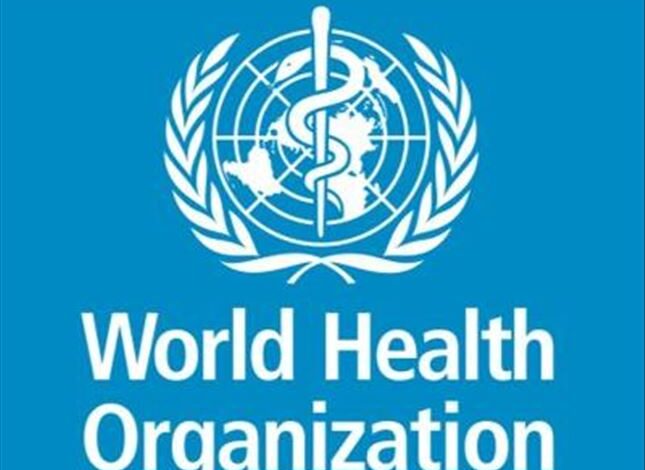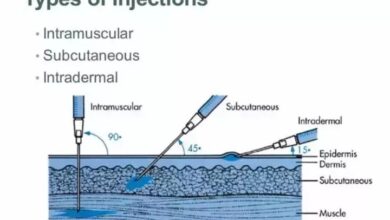World Health Organization (WHO) Definition Of Drug Safety

The World Health Organization (WHO) defines drug safety or pharmacovigilance as “the science and activities relating to the detection, assessment, understanding and prevention of adverse affects or any other possible drug-related problems.
Drug safety monitoring is an essential element for the effective use of medicines and for high quality medical care. It has the potential to inspire confidence and trust among patients and health professionals in medicines and contributes to raising standards of medical practice.
Until recently, pharmacovigilance has been confined mainly to detection of adverse drug events that were previously either unknown or poorly understood. Its particular purpose was to contribute to a scientific understanding of the safety profile of a rather small number of drugs and to advise national regulatory authorities.
How to Increase Awareness And Interest In Drug Safety
Pharmacovigilance is a clinical discipline in its own right – one that contributes to an ethos of safety and serves as an indicator of the standards of clinical care practiced within a country. Healthcare practitioners are in a position to make good use of their patients’ positive and negative experiences of treatment to contribute to medical science and to an improved understanding of disease and of the medicines.
There are three approaches that might serve to increase awareness and interest in drug safety among clinicians, and to address research issues. These include:
Education, training and access to reliable information
Adverse reactions tend to be viewed, incorrectly, as ‘side effects’ and thus as distractions from patients’ and doctors’ priorities. Learning about the scope and severity of ADRs should start early in professional training. Good safety monitoring encourages healthcare practitioners to take fuller responsibility for the medicines they use. It improves clinical effectiveness and increases the confidence with which they and their patients use medicines.
To achieve something nearer ideal practice more attention needs to be given to training health professionals in diagnosis, management and prevention of ADRs. Not all signals are as specific and dramatic, and readily diagnosed, as were the phocomelia and micromelia caused by thalidomide. Recognition of less obvious adverse effects requires clinical alertness, accurate diagnosis and an understanding of the principles of causality assessment.
Health professionals are more likely to identify and report important ADRs if they have confidence in their ability to diagnose, manage and prevent such reactions. National pharmacovigilance centres and training institutions play a central role in this by encouraging inclusion of the principles and methods of pharmacovigilance and the study of iatrogenic disease at undergraduate and postgraduate levels in schools of medicine, pharmacy and nursing.
Pharmacology curricula should give a higher priority to the study of the safety of medicines. This would lead to an enhanced awareness of the balance between the benefits and harms of medicines. An integrated approach to therapeutic decision-making might be encouraged. Excessive and irrational drug use contributes to adverse reactions. The misuse of medicines is largely caused by the poor quality and inaccessibility of drug information available to practitioners. These problems are worsened by:
• aggressive and inaccurate marketing and advertizing
• uninformed patient use and their demands for the latest medicines
• lack of accurate drug information.
Indicators of inappropriate drug use can be obtained from spontaneous reports of ADRs. Case examples may serve as useful teaching tools for improving the safe use of medicines. In some countries an overwhelming volume of information (as opposed to effective communication of critical information) can serve as a deterrent to rational use.
Medication errors and ADRs are well documented in hospitalized and non-hospitalized patients, and they contribute substantially to morbidity and mortality. They also contribute to the number of hospital admissions and are known to occur in the community setting. Many are predictable and preventable.
This suggests considerable opportunity for minimizing the risks of ADRs through rational use, monitoring and follow-up. Early detection is important, particularly in hospitals where systems for detecting ADRs and medication errors will save lives and money. Such systems might be linked to institutional, regional or national pharmacy and therapeutics committees so that information can be used to educate professional staff in safe drug use.
Prospective hospital-based surveillance reduces the risk and severity of ADRs. There is, furthermore, a need to provide health professionals with the skills required to evaluate drug information critically and to decide how the safety profile of a drug (e.g. developed from population data) might be applied to a particular patient. Often, the manufacturer’s product information and promotional materials are the only information available to the practitioner. Evidence-based and comprehensive sources may not be available. Availability of balanced and reliable drug information is likely to improve standards of use and to reduce the frequency of adverse reactions. Information that includes patients’ subjective experiences of adverse reactions would be most useful to patients and to prescribers of medicines. Product safety information, the way it is currently presented, often consists of lists of adverse reactions, perhaps rated in order of frequency, without real description of how these might affect quality of life. Moreover, prescribers should be free to practise without being subjected to the vested interest of manufacturers and any conflict in interest.
There are also other opportunities for integrating pharmacovigilance into clinical practice through training and education. Participation of National Centre staff in continuing education programmes, conferences, scientific publications and e-mail discussion groups all contribute. The National Centre might serve as a teaching base, and as a training centre for medical and pharmacy interns, post-graduate students, pharmacology registrars (residents) and drug information staff. Research in ADRs and pharmacoepidemiology in departments of internal medicine and pharmacology should be encouraged and promoted.
In the training of health professionals it is important to develop competence in evaluating and communicating information about benefit, harm, effectiveness and risk to the patient. Difficulties in communication between patients and healthcare providers represent an important and preventable potential source of harm. The following elements are likely to reduce significantly the risks of adverse effects and their severity:
• an adequate drug history of the patient
• rational prescribing and dispensing
• proper counseling
• the provision of clear and understandable drug information.
Communication with health professionals
A further strategy for integrating pharmacovigilance into clinical practice is the creation of open lines of communication and broader collaboration between health professionals and National Centres. For this to happen, National or regional centres need to be situated so that two-way communication between health practitioners and professional staff of the centre is easy. Drug information and poison centres are ideal locations for this purpose, since many poisoning reports and drug information queries are in fact ADRs. The staff of these centres are in an ideal position to support the work of pharmacovigilance.
Pharmacovigilance centers should provide ready access to clinical expertise and sharing of resources, including databases. Communication materials developed by drug information and poison centers, including newsletters and other publications, can be utilized for disseminating drug alerts and other drug safety information to the professions.
Academic departments and university hospitals have proved effective places for national and regional pharmacovigilance centres for a number of reasons. These include the following:
(i) Pharmacovigilance can readily be linked with experimental and clinical pharmacology, and epidemiology in that environment
(ii) The location makes peer review of adverse reaction reports easier and more efficient, and it provides ready access to hospital specialists in university departments. From such a base, an advisory panel for the National Centre with scientific and medical experts can be created
(iii) The information obtained from spontaneous reports can be incorporated into undergraduate and postgraduate teaching in the health sciences
(iv) Health professionals are likely to feel confident in reporting problems and therapeutic dilemmas to an academic unit with which they are familiar and that they know will consider their reports thoroughly and expertly
(v) Effective medical education strategies such as academic detailing, feedback on individual cases, reminders and soliciting the support of acknowledged experts are most readily achievable under these circumstances.
Clinicians making reports expect ready access to the centre and to specialized advice and feedback. They should be encouraged to publish unusual or interesting case reports without delaying submission of such reports to the National Centre. Newsletters, publications and responses by letter or telephone encourage dialogue with clinicians. Collaboration with professional accreditation bodies and associations, academic institutions, continuing education organizations, third party funders (e.g. managed care institutions, medical insurance companies) and other non-governmental organizations adds to the scope and quality of the work of the National Centre.
Linking clinical findings with research and policy
Careful study of adverse drug events may identify diagnostic features, syndromes or pathogenic mechanisms. Moreover, clinical, pathological and epidemiological information relating to adverse reactions is necessary for a full understanding of the nature of an adverse reaction and for identifying patients at risk.
Although spontaneous reporting is the mainstay of passive surveillance, the information obtained is inherently limited and likely to be insufficient for regulatory and clinical decisions. Active or intensive surveillance programmes for addressing serious safety concerns have had success in identifying and quantifying drug safety issues, using:
• case control networks
• hospital-based intensive monitoring systems
• record linkage systems
• epidemiological studies.
Information received from pharmacovigilance centres should feed directly into drug policy and drug utilization practice. Safety information from National Centres has a bearing on essential drugs programmes, standard treatment guidelines, and national and institutional formularies.
Measuring the impact of such information on drug utilization and on the quality of patient care has considerable research potential. It is necessary that drug regulatory decisions should be based on safety information that reflects national as well as international experience, and that this has been thoroughly and expertly reviewed. Drug utilization patterns also need to be taken into account.
ADRs have the potential to provide insights into structure-activity relationships, pharmacokinetic, pharmacodynamic and genetic factors affecting the action of medicines. They may provide leads for other novel, indications. This is why it is important for the negative connotation of an ADR to be removed and for systems to be developed that enable medical, pharmaceutical and chemical information to be applied constructively to a better understanding of how drugs work





